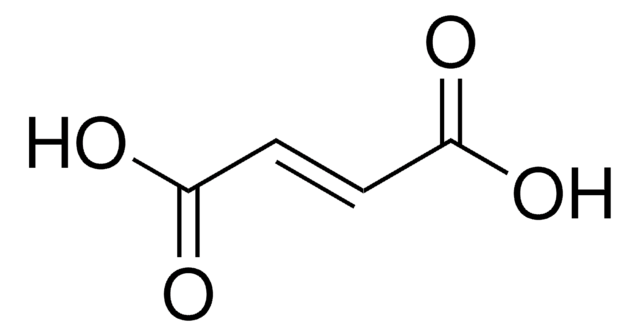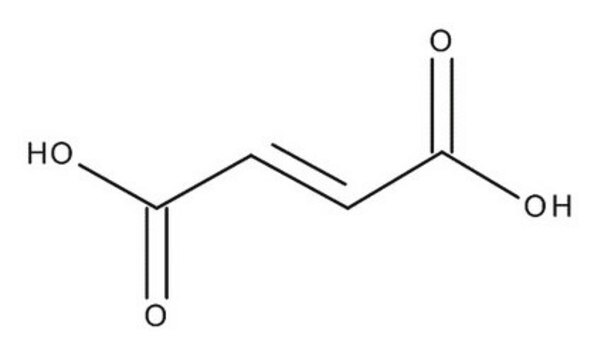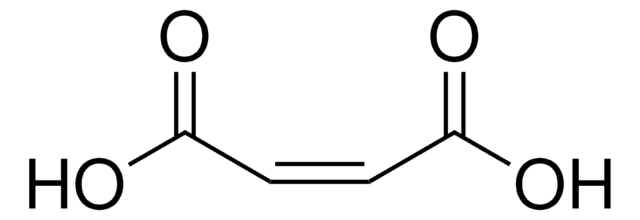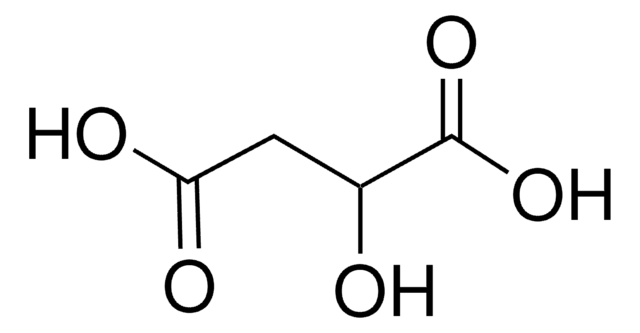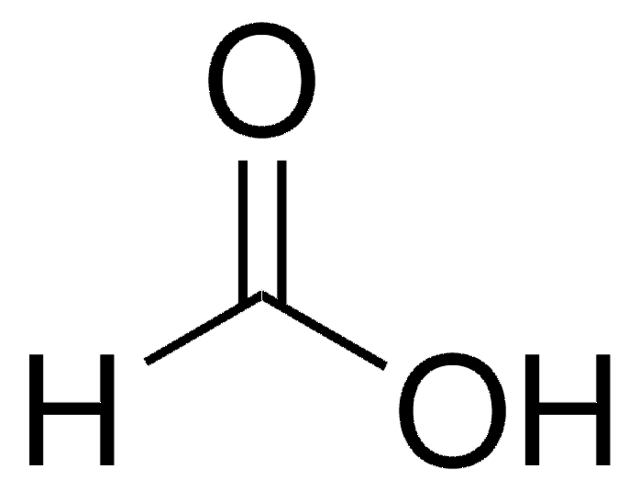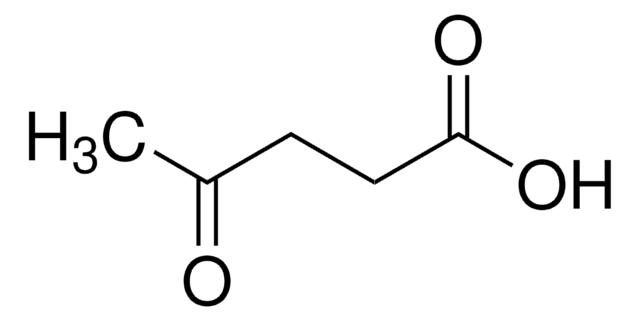W248800
Fumaric acid
FCC, FG
Synonym(s):
Boletic acid, Lichenic acid, Trans-1,2-ethylenedicarboxylic acid
About This Item
Recommended Products
biological source
synthetic
Quality Level
grade
FG
Halal
Kosher
reg. compliance
EU Regulation 1334/2008 & 178/2002
FCC
FDA 21 CFR 117
FDA 21 CFR 172.350
FDA 21 CFR 175.105
vapor pressure
1.7 mmHg ( 165 °C)
form
powder or crystals
autoignition temp.
1364 °F
expl. lim.
40 %
mp
298-300 °C (subl.) (lit.)
application(s)
flavors and fragrances
documentation
see Safety & Documentation for available documents
food allergen
no known allergens
organoleptic
odorless
SMILES string
OC(=O)\C=C\C(O)=O
InChI
1S/C4H4O4/c5-3(6)1-2-4(7)8/h1-2H,(H,5,6)(H,7,8)/b2-1+
InChI key
VZCYOOQTPOCHFL-OWOJBTEDSA-N
Looking for similar products? Visit Product Comparison Guide
Related Categories
Application
signalword
Warning
hcodes
Hazard Classifications
Eye Irrit. 2
Storage Class
11 - Combustible Solids
wgk_germany
WGK 1
flash_point_f
523.4 °F
flash_point_c
273 °C
ppe
dust mask type N95 (US), Eyeshields, Gloves
Certificates of Analysis (COA)
Search for Certificates of Analysis (COA) by entering the products Lot/Batch Number. Lot and Batch Numbers can be found on a product’s label following the words ‘Lot’ or ‘Batch’.
Already Own This Product?
Find documentation for the products that you have recently purchased in the Document Library.
Customers Also Viewed
Our team of scientists has experience in all areas of research including Life Science, Material Science, Chemical Synthesis, Chromatography, Analytical and many others.
Contact Technical Service